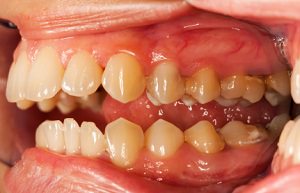
|
Everyone, from time to time, will be plagued by an infection. They spread easily, and even if you're in the best of health, you're not immune. Here are 6 common infections that most of us catch quite easily. It's a relief to learn that these 6 also have quick treatments and don't require much more effort than visiting your local chemist. |
|
|
1. The silent disease Its formal name: Chlamydia Silent ticking bombs: Most carriers aren’t even aware that they are carriers because the disease is largely asymptomatic in the beginning. |
 |
| Source | |
|
An intimate transfer: The mostly asymptomatic disease is transmitted sexually. When you are symptomatic it’s unpleasant: Purulent urethral discharge for men, pelvic inflammatory disease, eye infections, ectopic pregnancy and other unsavory feelings. It's very popular: Every year 92 million new cases are reported around the world. There's good news amongst the gloom: It’s easily treatable. You just need to take an STD test and your doctor can prescribe you pills to treat it. |
|
|
2. Skin "refugees" The perpetrators: Dermatophytes, fungi that love keratin, a major protein that exist in the outer layers of your skin, which cause various types of tinea, also known as ringworm. |
|
| Source | |
|
Targeted neighborhoods: Dermatophytes are lovers of moist environments, such as the groin, feet and head, all commonly desired locations. Some of the troops: Scalp ringworm (tinea capitis), jock itch (tinea cruris), and athlete's foot (tinea pedis) How they get around: The fungi transfer from contact with people, pets, towels, clothes, hairbrushes and other personal grooming items. Zap it: Luckily ringworm is quite easily vanished with over-the-counter antifungal creams or prescription oral medication.
|
|
|
3. Sand in the eye What to call it: Conjunctivitis aka Pinkeye Most common symptom: Sensation of sand rubbing against an eyeball Suspects that cause Pinkeye: Allergens, bacteria or viruses. A well-traveled bug: The viral form of conjunctivitis is highly contagious. It can even be passed on through a shared towel or a swimming pool. |
|
| Source | |
|
Light at the end of the tunnel: 65% of cases disappear without any treatment after 2-5 days. If it doesn’t disappear after that medication or topical treatments can be prescribed.
|
|
|
4. Red gums What’s the story: Bacteria enter your mother via food. Plaque can lead to gingivitis. |
 |
| Source | |
|
Gingi-who? That is an inflammation of the gums, which often leads to bleeding. Common in teenagers, it can progress into periodontitis and tooth loss later on in life. Poor oral hygiene is also associated with cardiovascular disease. What you can do: Floss, go to the dentist for cleanings, use mouthwash and fluoride toothpaste. |
|
|
5. Gastro trouble Clinical name: Viral gastroenteritis Common name: Stomach flu Nicknames: Winter vomiting, traveler’s diarrhea The story: An acute illness, where the tract where food is broken down malfunctions, causing lots of unexplained exits |

|
| Source | |
|
Frequent troublemaker: Rotavirus is the number one cause of this troubling infection Kid-friendly: According to the World Health Organization it’s the most common cause of severe diarrhea in children worldwide. How it gets around: The unglamorous fecal-oral route aka microscopic amounts of sewage contaminate food and wreak havoc on our intestines. Good news: There’s a rotavirus vaccine.
|
|
|
6. Middle ear infection Formal Name: Otitis Media, with the most common form being Acute Otitis Media How you feel: You have a fever, earache; you might have difficult hearing and yellow fluid leaks from your ear Causes: Viruses and bacteria |
|
| Source | |
|
Targeted audience: Kids. It’s a common childhood affliction. Fix me: Middle ear infections usually go away by themselves after a few days, but you can treat the symptoms with painkillers. |
|
| H/T: www.britannica.com | |